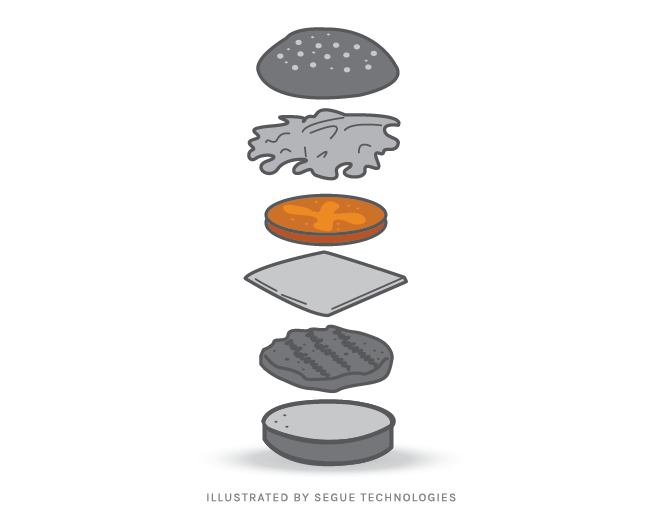Designers adore it. Website owners want to fill it. What is it? Whitespace! Whitespace is one of the most overlooked and underutilized elements that make up a great web layout. Too often, whitespace is seen as empty space and, therefore, a waste of screen real estate. However, the truth is that whitespace is one of the most valuable parts of your design. But why is it so important and how do we make sure it is maintained?

Why Does Whitespace Matter?
As a designer, I’ve always believed that whitespace is THE fundamental building block of good design. When designers talk about whitespace, they actually mean negative space, the space between elements in a composition. It is the portion of the page left unmarked; the space between graphics, margins and gutters. It is the space between columns, between lines of type or figures that provides visual breathing room for the eye.
Whitespace is an important element of design for good reason. If used well and correctly, it can transform a design and provide many advantages to your website. We need to deliver and develop layouts that are easy on the eyes and make people want to keep reading. It’s always important to remember that when we are designing for the web, our number one goal is to deliver a great product to our clients.
The Advantages of Using Whitespace
- Increased Content Legibility: When users are on your site, they should be able to see where they are going and be given a reason to keep reading. Believe it or not, whitespace between paragraphs and around blocks of text and images actually helps people understand what they are reading and adds up to a better user experience overall.
- More Interaction: Let’s face it, visitors are always in a hurry when browsing through sites, and having a good amount of whitespace will increase interaction by preventing distractions that slow the visitor down. Even a slight padding around objects will help draw attention to a specific area on your site. According to research conducted by Human Factors International, whitespace increases comprehension by almost 20%.
- Ability to Highlight Call to Actions (CTAs): At times, the most obvious way to make something stand out is to make things bigger. You can make images bigger or buttons bigger. However, surrounding the item with whitespace can be just as effective.
- A Tidy Site Equals an Impressive Site: Your site’s first impression matters a lot. A whole lot. Great solid layouts, good color schemes — all these elements add to the impression a website makes, but whitespace is especially important because it indicates finesse and ingenuity. Whitespace does not make your website bare and minimalistic. As long as whitespace is used in the correct manner, it will definitely add a sense of elegance and superiority to your website.
- Creating Balance: Too little whitespace leads to confusion, disorganization and unreliability – qualities you don’t want associated with your site’s brand. On the other hand, too much whitespace could highlight a lack of content and a lack of user guidance. The key is to balance your designs and let whitespace act as a great tool to separate chunks of content for easy accessibility and improved user experience. (Click here to read more about your site’s Heurisitic Reviews)
- Acts as a Separator: Whitespace separates unrelated elements in a design. It can be used to separate images/graphics from each other and improves your overall visual layout. The use of proper whitespace paves the way to a clearer communication of ideas and effective designs
Things to Consider When Using Whitespace
With all of these great benefits, we also need to understand that even with the best intentions, whitespace can often be crowded out of a design. In order to prevent this, we need to understand why it happens and how to resolve it.
- Designer vs. Developer: Imagine this all-too-common scenario: A designer creates a wonderful layout. The layout is passed on to the developer who hands it back to the designer, although now the layout looks totally different compared to what the designer originally intended. Before development even starts, I believe it is important for the designer and developer to collaborate and discuss layout concepts/wireframes, highlight and emphasize padding, plan out margins and line heights and all the other design details of your site to avoid any misunderstandings and confusion.
- The Fold: Whitespace is often ignored and pushed out of a design because someone within the organization insists on squeezing as much content as possible high on the page, thus sucking any whitespace from the design. It is important to remember that we do not know the point where users have to start scrolling. Where the fold lies on a viewer’s screen is impossible to know, so in the end, the fold is not worth worrying about.
- Explaining Your Design: Talking to your client and explaining your motive and principle is vital. As designers, we have to answer in terms that clients can understand rather than make fluffy generalizations. We need to back up the choices we make and stay clear of vague arguments that make little sense to others. Knowing the facts is crucial, as is explaining them.
Whitespace not only creates harmony, balance, and helps to brand a design, it can also be used to lead a reader from one element to another. Our main goals are to make the website look simple and uncluttered and to deliver information that our readers will enjoy and appreciate. Whitespace should not be considered merely “blank” space — it is the element of design that enables the objects on the page to exist. It is the space that balances things out and reminds us that designs are beautiful. We don’t need to create a layout overcrowded with text and images to deliver a clear message.
Here are some references and related reading:
- http://www.robotforce.com/web-design-blog/making-use-of-white-space-in-web-design/
- http://webdesignledger.com/inspiration/21-inspiring-examples-of-white-space-in-web-design
- http://alistapart.com/article/whitespace
- http://www.netmagazine.com/features/importance-whitespace-web-design